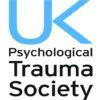EMDR (Eye Movement Desensitisation and Reprocessing) aims to reduce the distressing memories following a traumatic event. EMDR was originally developed to treat adults with PTSD (post-traumatic stress disorder). The National Institute for Clinical Evidence (NICE) recommends EMDR for PTSD. However, it is also used to treat other conditions which are thought to arise out a significant past event. EMDR is known to successfully treat:
- PTSD
- depression
- performance anxiety
- phobias and fears
- anxiety
- low self-esteem
Sometimes, a distressing or traumatic memory can surface itself in the mind as if the original event is happening all over again. A person can re-experience images, sensations and thoughts experienced many years previously. And sometimes, no matter how much a person wants to move on with their lives, the event replays itself again and again uninvited and can be overwhelming and intense.
Sometimes these events emerge as flashbacks or nightmares. Sometimes it is more subtle. An everyday happening can recall the trauma and the individual reports that they have behaved disproportionately and seeming uncontrollably to the confusion of themselves and others.
Trauma therapies help individuals process memories and the sights, sounds, smells, thoughts and feelings which are ‘stuck’ in the past and triggered by harmless happenings in the present. While these unpleasant memories cannot be erased, Eye Movement Desensitisation Reprocessing (EMDR) can help the experiences become ‘unstuck’ to store them like ordinary memories which cause less distress.
EMDR works by alternating left-right stimulation of the brain with eye movements, sounds or taps. This simulates what happens naturally during REM sleep (Rapid Eye Movement).
Rachel works with both single event trauma such as road traffic collisions and more complex trauma arising from living with abuse.
What happens in EMDR therapy?
Before EMDR treatment begins, Rachel will talk you through the theory, answering any questions you may have. At this point you will go through some relaxation exercises – guided meditations or breathing techniques for you to draw on during times of stress outside of your sessions. This is known as the second phase of EMDR in preparing you for the treatment.
We often agree a timeline of significant life events that you may notice still cause you distress today. The distress may be experienced as negative thoughts, feelings or symptoms in your body. Sometimes though not having any feelings and feeling ‘blank’ or numb about difficult life events can indicate that the distress is deeply buried and we have disconnected from it.
When the events we are focussing on are agreed, Rachel will begin to lead you through phases three to six. You will now target specific distressing memories with eye movements or other forms of left-right stimulation such as taps or sounds. To start with, you will select an image to represent the event and then to think about positive and negative thoughts, the amount of distress you feel and where you feel it in your body. Rachel will then use bilateral eye movements (or taps or sounds) in a series of ‘sets’ lasting around 25 seconds. After each set, Rachel will ask you to briefly feedback on your experience during the preceding set, before starting the eye movements again. Rachel may also ask you to recall the original memory and ask you how it seems to you now. This will continue until your distress has cleared (or is reduced as much as possible) and you are experiencing more positive thoughts and feelings.
The seventh phase is known as closure and it offers you time to feel calm again using the relaxation exercises you learnt at the beginning of the session. Finally, the eighth phase is called re-evaluation – and this is effectively the first step in your next session.
Is EMDR for me?
People who are going through major instability in their life may not benefit from EMDR. It is important for us to have a sense of safety and stability before beginning trauma focussed therapy. Sadly people who are using substances or alcohol to cope with distress may not fully benefit until these unhealthy ways of coping are reduced. Integrative counselling and CBT can support clients with these kind of difficulties before EMDR processing starts. This preparation phase can take time and enable clients to make positive life changes before working on past traumatic events.
Click here to find out more about EMDR




